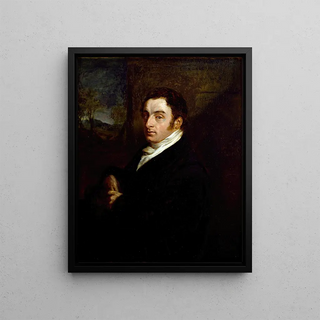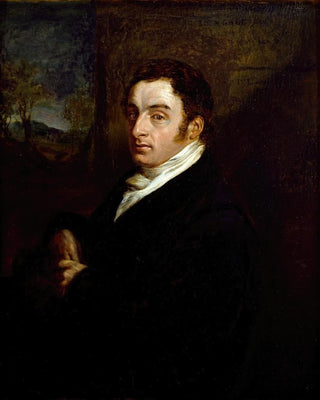Art print | John Gage - John Linnell


View from behind

Frame (optional)
John Gage - John Linnell art print – Captivating introduction
The "John Gage - John Linnell" art print embodies a fascinating encounter between realism and psychological introspection. This piece, rooted in the 19th-century movement, transports us into a universe where light and shadow engage in a subtle dance, revealing deep emotions and hidden stories. Through the gaze of the model, the artist manages to capture not only a physical appearance but also an essence, a soul. By contemplating this art print, the viewer is invited to delve into the intimacy of the scene, to explore the thoughts and feelings behind this face, while being seduced by Linnell's technical mastery.
Style and uniqueness of the work
John Linnell's style is characterized by meticulous attention to detail and a rich, nuanced color palette. In "John Gage," each brushstroke seems loaded with meaning, each carefully placed shadow enhancing the depth of the composition. The way light caresses the model's face creates an atmosphere that is both serene and melancholic, inviting the viewer to question the personal story of John Gage. Linnell excels in rendering textures, whether it is skin, clothing, or elements of the setting. This ability to make reality tangible is what makes his work so unique, allowing each person to feel an immediate emotional connection with the subject.
The artist and his influence
John Linnell, an emblematic figure of the Pre-Raphaelite movement, left his mark on his era with his unique artistic vision. A student of William Blake, he developed a style that combines classical tradition with romantic sensitivity. His influence extends beyond his own work, inspiring many contemporary and future artists. Linnell also played a key role in rediscovering ancient techniques, advocating a return to nature and truth in art. Through his portraits, he does not merely depict individuals but also explores universal themes such as identity, memory, and the passage of time. His innovative approach paved the way for new interpretations of portrait painting, thus marking a turning point in the history of

Matte finish

View from behind

Frame (optional)
John Gage - John Linnell art print – Captivating introduction
The "John Gage - John Linnell" art print embodies a fascinating encounter between realism and psychological introspection. This piece, rooted in the 19th-century movement, transports us into a universe where light and shadow engage in a subtle dance, revealing deep emotions and hidden stories. Through the gaze of the model, the artist manages to capture not only a physical appearance but also an essence, a soul. By contemplating this art print, the viewer is invited to delve into the intimacy of the scene, to explore the thoughts and feelings behind this face, while being seduced by Linnell's technical mastery.
Style and uniqueness of the work
John Linnell's style is characterized by meticulous attention to detail and a rich, nuanced color palette. In "John Gage," each brushstroke seems loaded with meaning, each carefully placed shadow enhancing the depth of the composition. The way light caresses the model's face creates an atmosphere that is both serene and melancholic, inviting the viewer to question the personal story of John Gage. Linnell excels in rendering textures, whether it is skin, clothing, or elements of the setting. This ability to make reality tangible is what makes his work so unique, allowing each person to feel an immediate emotional connection with the subject.
The artist and his influence
John Linnell, an emblematic figure of the Pre-Raphaelite movement, left his mark on his era with his unique artistic vision. A student of William Blake, he developed a style that combines classical tradition with romantic sensitivity. His influence extends beyond his own work, inspiring many contemporary and future artists. Linnell also played a key role in rediscovering ancient techniques, advocating a return to nature and truth in art. Through his portraits, he does not merely depict individuals but also explores universal themes such as identity, memory, and the passage of time. His innovative approach paved the way for new interpretations of portrait painting, thus marking a turning point in the history of






